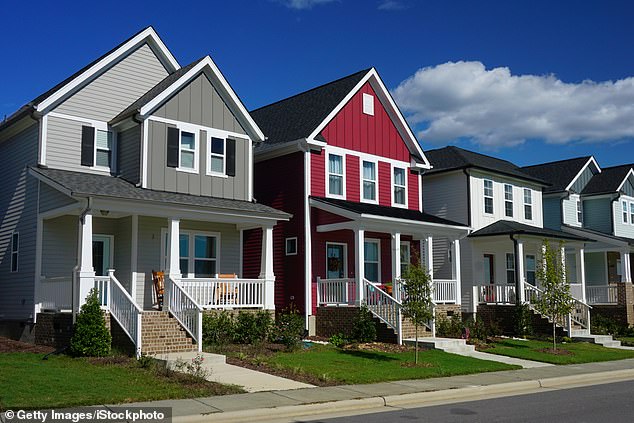US faces negative equity timebomb: Percentage of mortgages considered ‘seriously underwater’ rises – here are the states worst affected
- The number of mortgage holders who end up in negative equity has increased
- Homeowners with a loan-to-value ratio of 125 percent or more rose to 2.7 percent
- Have you ended up in negative equity? Send an email to: money@dailymail.com
The number of U.S. homeowners falling into negative equity rose in the first quarter of the year as rising costs of living and a volatile real estate market put pressure on households.
The number of mortgages considered ‘severely underwater’ has risen from 2.6 percent to 2.7 percent of all residential mortgages, a new report has found.
In Kentucky, the percentage of mortgage holders ‘severely underwater’ rose to 8.3 percent in the first three months of the year – the highest of any US state. To meet the threshold, owners must owe at least 25 percent more than the appraised value of their home.
Louisiana, where home prices have fallen 2.8 percent in one year, has the largest share of mortgage holders in difficulties. About 11.3 percent of home loans in the Pelican State are now seriously underwater. according to the latest data from ATTOM.
Wyoming followed suit, with 8.8 percent of mortgage holders reaching the threshold.
In Mississippi, 7.1 percent of mortgage holders are considered “severely underwater,” while in Oklahoma it is 6.1 percent.
Negative equity occurs when an individual’s outstanding mortgage balance exceeds the value of their property.
In a strong market, homes should increase in value over time, meaning borrowers have little risk of falling into negative equity.
However, when prices start to fall and interest rates rise, those with small down payments are most at risk of going underwater.
Falling into negative equity can make it difficult to sell or refinance a home, leaving many feeling trapped in their property. The issue exploded into a crisis during the 2008 financial crisis, when house prices plummeted overnight.
And now borrowers are facing a similar problem as the hot real estate market of the past two years begins to cool, with mortgage rates at 7.09 percent for a 30-year fixed term, according to the latest data from Freddie Mac.
Home loans have been boosted by the Federal Reserve’s aggressive tightening cycle, which has pushed interest rates to a 23-year high.

The number of mortgage holders who end up in negative equity has increased

Homeowners with a loan-to-value ratio of 125 percent or more rose to 2.7 percent
Despite this, house prices have remained surprisingly high as people with cheaper fixed-rate mortgages have chosen not to move, and housing supply constraints have kept demand high.
But families are facing the highest costs of living in recent memory as inflation remains at 3.5 percent, potentially leading to more mortgage foreclosures.
ATTOM also noted a decline in the percentage of mortgage holders considered ‘equity rich’ for the third quarter in a row.
Homeowners with a loan-to-value ratio of 50 percent or lower fell to 45.8 percent in the first quarter of the year, compared to 46.1 percent in the previous quarter.
According to ATTOM, the figures represent the lowest level of high-equity mortgages in two years.
“The real estate market windfalls are beginning to erode little by little amid increasing signs that the market is no longer so overheated,” Rob Barber, CEO of ATTOM, said of the report’s findings.
He added: ‘It is too early to make general statements about the direction of the market, especially as it emerges from the generally slower autumn and winter months.
“But amid recent trends, this spring’s buying season will be more important in telling us whether a new market pattern is developing over the long term.”
